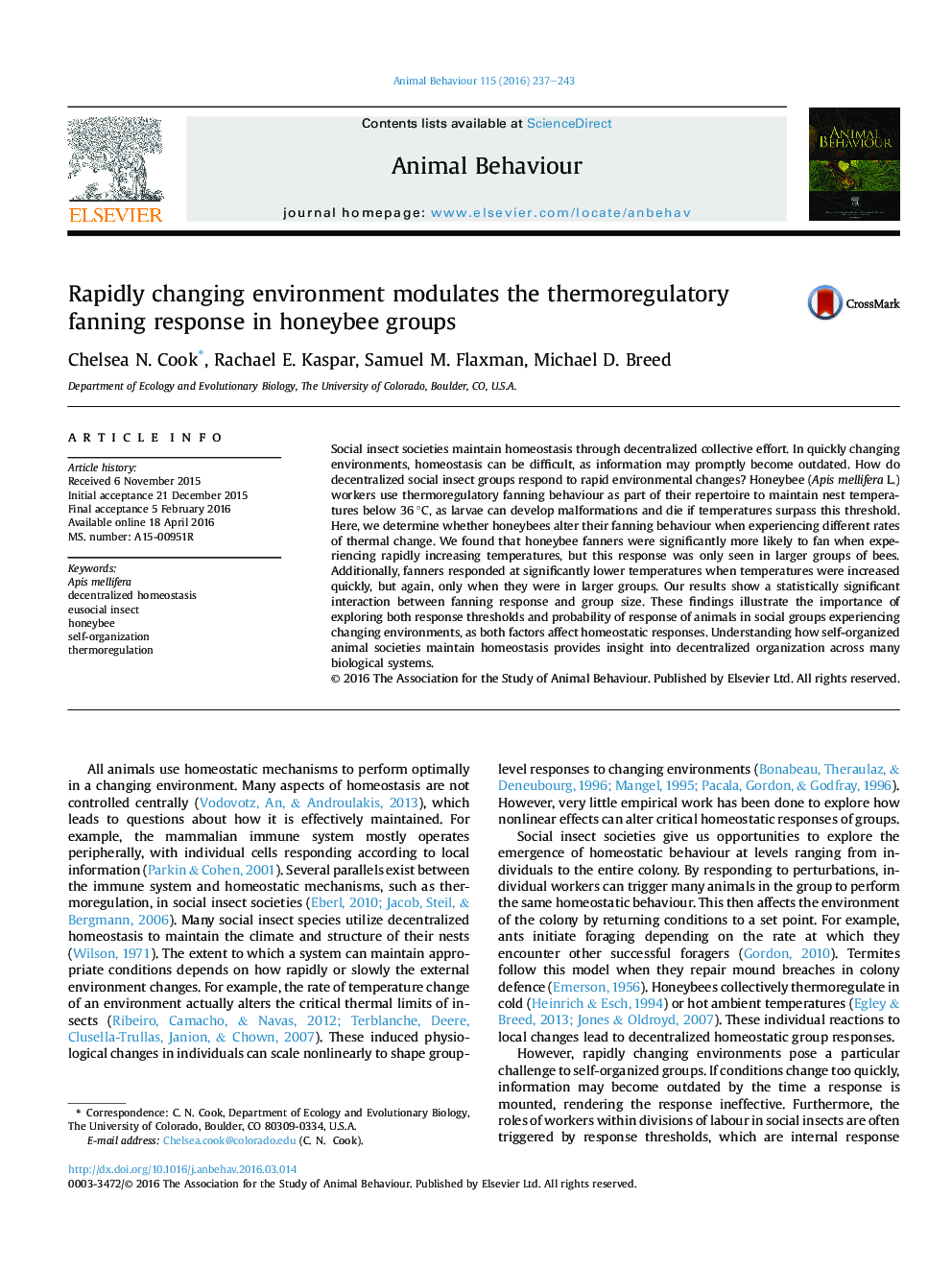| Article ID | Journal | Published Year | Pages | File Type |
|---|---|---|---|---|
| 8489133 | Animal Behaviour | 2016 | 7 Pages |
Abstract
Social insect societies maintain homeostasis through decentralized collective effort. In quickly changing environments, homeostasis can be difficult, as information may promptly become outdated. How do decentralized social insect groups respond to rapid environmental changes? Honeybee (Apis mellifera L.) workers use thermoregulatory fanning behaviour as part of their repertoire to maintain nest temperatures below 36 °C, as larvae can develop malformations and die if temperatures surpass this threshold. Here, we determine whether honeybees alter their fanning behaviour when experiencing different rates of thermal change. We found that honeybee fanners were significantly more likely to fan when experiencing rapidly increasing temperatures, but this response was only seen in larger groups of bees. Additionally, fanners responded at significantly lower temperatures when temperatures were increased quickly, but again, only when they were in larger groups. Our results show a statistically significant interaction between fanning response and group size. These findings illustrate the importance of exploring both response thresholds and probability of response of animals in social groups experiencing changing environments, as both factors affect homeostatic responses. Understanding how self-organized animal societies maintain homeostasis provides insight into decentralized organization across many biological systems.
Related Topics
Life Sciences
Agricultural and Biological Sciences
Animal Science and Zoology
Authors
Chelsea N. Cook, Rachael E. Kaspar, Samuel M. Flaxman, Michael D. Breed,
